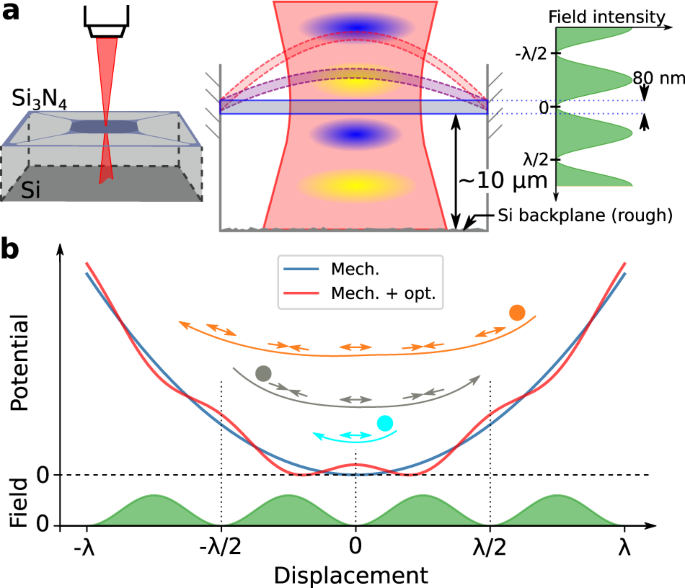2023-03-23 スウォンジー大学
◆ジャーナル”Geophysical Research: Biogeosciences”に掲載されたこの研究は、SPINプログラム(Swansea Paid Internship Network)の一環で行われ、ジョイントUKランド環境シミュレーター(JULES)モデルのさまざまな応用を調査し、二酸化炭素と水循環を含む環境プロセスを予測するものでした。
◆JULESは、樹木の成長年輪に含まれる炭素の同位体比(Δ13C)の推定について、樹輪測定と比較することによって改善され、異なる気候条件下での生態系の機能に関するより正確な予測が可能になります。
◆研究の結果、JULESは、英国の12か所のうち8か所で樹木の成長年輪のΔ13Cを正確に予測しましたが、すべてのサイトでΔ13Cの年間変動を過小評価していました。この結果は、JULESの改善が必要であり、炭素と水の循環を予測する不確実性を減らし、将来の気候と植生の相互作用のより正確な予測を行うための改善策を特定するために科学コミュニティが貢献できることを示しています。
<関連情報>
- https://www.swansea.ac.uk/press-office/news-events/news/2023/03/swansea-students-collaboration-with-met-office-to-help-advance-land-surface-model.php
- https://agupubs.onlinelibrary.wiley.com/doi/10.1029/2022JG007041
JULES地表面モデルで予測される炭素同位体識別の時空間的変動 Spatio-Temporal Variations in Carbon Isotope Discrimination Predicted by the JULES Land Surface Model
Lewis Palmer, Iain Robertson, Aliénor Lavergne, Deborah Hemming, Neil J. Loader, Giles Young, Darren Davies, Katja Rinne-Garmston, Sietse Los, Jamie Williams
Journal of Geophysical Research: Biogeosciences Published: 04 December 2022
DOI:https://doi.org/10.1029/2022JG007041

Abstract
Stable carbon isotopes in plants can help evaluate and improve the representation of carbon and water cycles in land-surface models, increasing confidence in projections of vegetation response to climate change. Here, we evaluated the predictive skills of the Joint UK Land Environmental Simulator (JULES) to capture spatio-temporal variations in carbon isotope discrimination (Δ13C) reconstructed by tree rings at 12 sites in the United Kingdom over the period 1979–2016. Modeled and measured Δ13C time series were compared at each site and their relationships with local climate investigated. Modeled Δ13C time series were significantly correlated (p < 0.05) with tree-ring Δ13C at eight sites, but JULES underestimated mean Δ13C values at all sites, by up to 2.6‰. Differences in mean Δ13C may result from post-photosynthetic isotopic fractionations that were not considered in JULES. Inter-annual variability in Δ13C was also underestimated by JULES at all sites. While modeled Δ13C typically increased over time across the UK, tree-ring Δ13C values increased only at five sites located in the northern regions but decreased at the southern-most sites. Considering all sites together, JULES captured the overall influence of environmental drivers on Δ13C but failed to capture the direction of change in Δ13C caused by air temperature, atmospheric CO2 and vapor pressure deficit at some sites. Results indicate that the representation of carbon-water coupling in JULES could be improved to reproduce both the trend and magnitude of interannual variability in isotopic records, the influence of local climate on Δ13C, and to reduce uncertainties in predicting vegetation-environment interactions.
Plain Language Summary
Carbon has two stable isotopes, 12C and 13C. During the diffusion of carbon dioxide through the stomata of C3 plants, the lighter carbon isotope (12C) diffuses more easily resulting in leaf internal air that is depleted in 13C compared to the ambient air. Tree rings record this discrimination against 13C (noted Δ13C) which is used to decipher information about past climates, including atmospheric CO2 concentration when the rings formed. The Joint UK Land Environment Simulator (JULES) is a land-surface model that predicts environmental processes (e.g., the carbon and water cycles). Comparing JULES estimates of Δ13C with tree-ring measurements helps to improve simulations, leading to more accurate projections of ecosystem functioning under different climates. We found that JULES accurately predicted tree-ring Δ13C in 8 out of 12 UK sites over a 38-year period, with offsets in mean values of up to 2.6‰, but underestimated interannual variations in Δ13C at all sites. JULES captured the influence of environmental changes on tree-ring Δ13C relatively well, although the trees’ responses at individual sites varied. Results suggest that improvements are needed in JULES to reduce uncertainties in predicting the carbon and water cycles and therefore to produce more accurate projections of future climate-vegetation interactions.
Key Points
- Joint UK Land Environmental Simulator (JULES) predicted well the tree-ring Δ13C of oaks in eight out of 12 UK sites but underestimated inter-annual variations and mean values
- JULES captured the environmental drivers of Δ13C, but the model failed to reproduce the direction of change in Δ13C at some individual sites
- More tree-ring chronologies are needed to improve understanding of spatio-temporal changes in Δ13C for UK broadleaf deciduous trees



